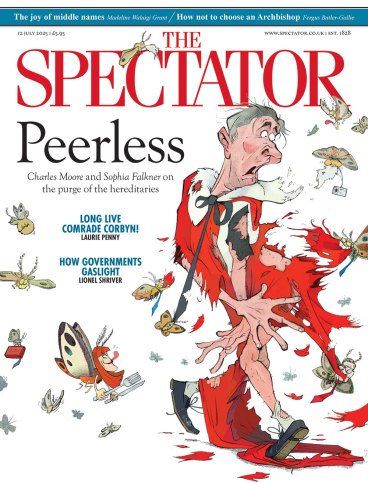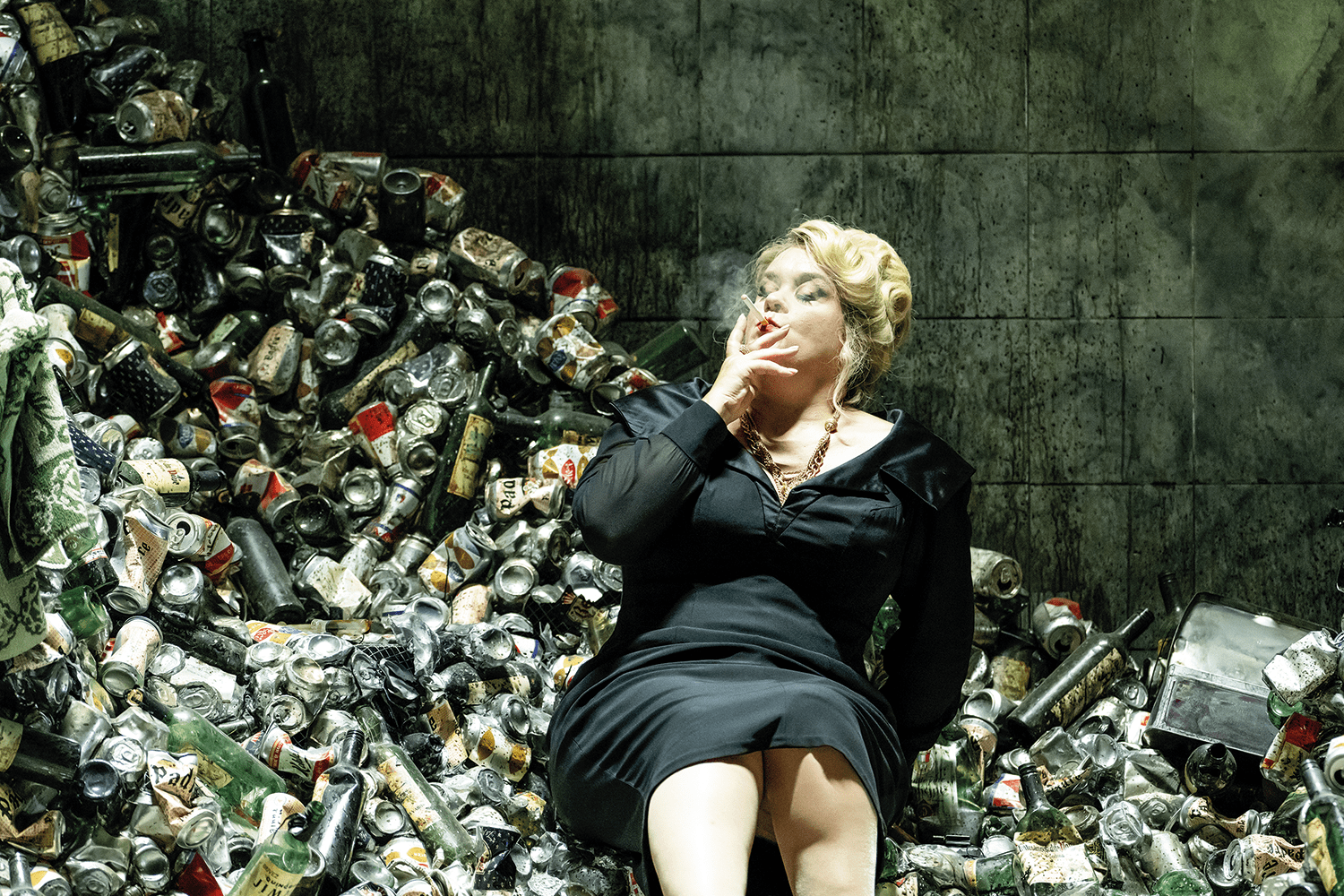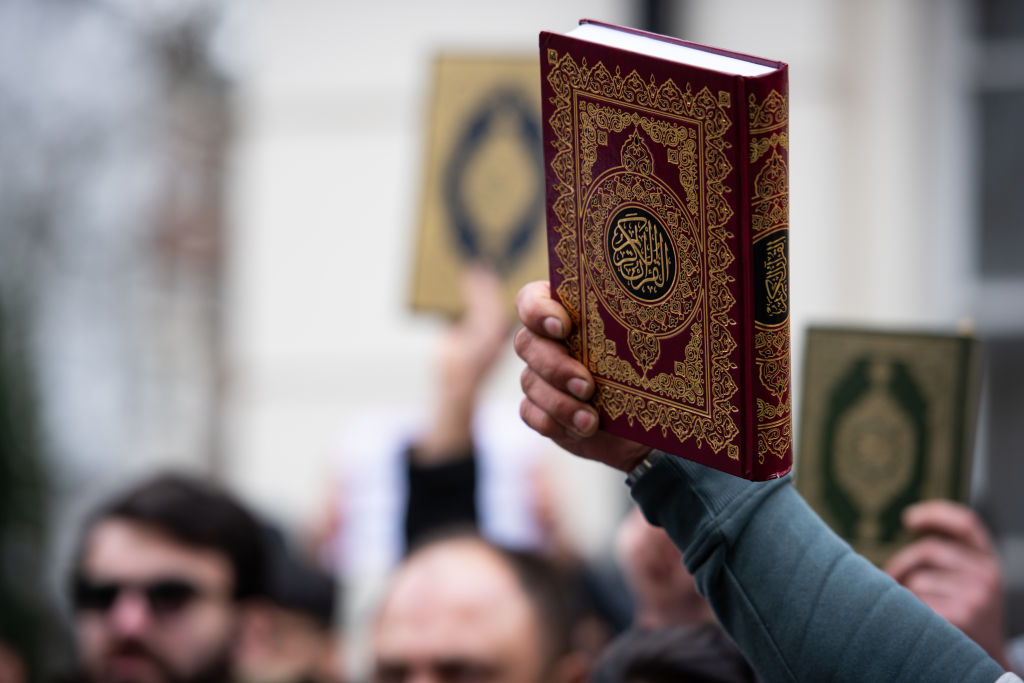
The past is a foreign country: they do things differently there – and opera directors really, really wish they didn’t. The problem is particularly acute if, like the Royal Opera’s Oliver Mears, you believe in staging Handel’s concert works as if they were operas. Broadly speaking, Handel’s oratorios affirm the moral and political consensus of Hanoverian England – Protestantism, marriage, loyalty to Church and Crown. All deeply uncool now, of course, so when Mears staged Jephtha in 2023 he duly inverted its central premise. The good guys became the bad guys. Unfortunately, Handel missed that production meeting and the result was as incoherent as it was dour.
Semele is a slightly different case. Handel is trying something altogether friskier – disarmingly so, at times. Even here, though, there’s an unambiguous moral: ‘Nature to each allots his proper sphere.’ Can’t be having that, so Mears spins this lively parable of vanity, lust and fatal hubris into a grim tale of sexual exploitation. For Handel and his librettist William Congreve, Semele’s gleeful delusions of divinity and Juno’s murderous hatred are aspects of a femininity so toxic that it’s practically radioactive (there’s a reason why Handel gives Jupiter the most tender music in the whole show). All irrelevant, apparently, as long as Mears can somehow wrestle Handel’s jubilant conclusion onto the territory where the 21st century feels most comfortable, namely cynicism with a side-order of mental illness.
Still, the old Saxon weaves a powerful magic. There are stretches where even Mears forgets the box-ticking and starts to have fun, despite the drab, dimly-lit designs (the Olympian gods live in the foyer of a run-down 1930s civic hall). Pretty Yende (Semele) and Niamh O’Sullivan (her sister Ino) are both spirited performers, and Yende’s voice was appealingly bright, even if her coloratura sounded rather untethered. Mears scored a lot of laughs in their reunion scene, where Ino arrives for a girly sleepover, laden down with designer shopping.
Alice Coote, meanwhile, was an irresistible Juno, played (very effectively) as a cartoon battleaxe, with a voice that swung from dark, gurgling snarls to a truly fearsome brilliance as she plots her revenge. Together with her PA Iris (a delightfully sparky Marianna Hovanisyan), she disrupts Somnus’s eternal sleep, and Brindley Sherratt was a sepulchral sounding sleep-god: slumped in his underpants in a grimy bathtub as Juno sweeps briskly in, opening curtains and turning on the shower. On this, at least, I’m with Mears. Morning people really are the worst.
But you want to know if you should see this Semele, or whether it’ll just irritate you, and that’s tricky. There’s no getting away from the contradictions of Mears’s staging, and the final scenes are particularly gratuitous. Yende’s a genuine star, but she sounded less than stellar when I heard her. As Jupiter, on the other hand, Ben Bliss recovered from a slightly colourless start to give a performance of ‘Where’er You Walk’ that was so eloquent – so charged with quiet sensuality – that it cast its radiance over the whole evening. And best of all, Christian Curnyn conducted in huge, succulent swirls and flourishes; Handel playing that hits you in the stomach and floods the ear with splendour. If you’ve only ever heard Handel performed on period instruments, that might be worth the ticket price in its own right.
Oliver Mears spins this lively parable of vanity, lust and fatal hubris into a grim tale of sexual exploitation
Conversely, if you’ve only heard Mozart with a modern orchestra, the playing of the Orchestra of the Age of Enlightenment under Riccardi Minasi in Glyndebourne’s new Le nozze di Figaro might well sell you on the alternative. It’s so silvery; so buoyant and warm. Mariame Clément is the director and she’s done the unthinkable, setting the action in an aristocratic household near Seville in the 1780s. Julia Hansen’s revolving pastel-coloured sets don’t photograph well, but in the theatre, they allow for wonderfully ingenious and lucid storytelling, with the whole labyrinthine palace peopled by an army of bustling, watching (and occasionally singing) staff. Clément engages with the manners and values of the late 18th century, and directs the cast to behave like human beings. And voilà: everything falls gracefully into place. Who could have guessed?
A good Figaro at Glyndebourne is one of opera’s most life-enhancing experiences
A good Figaro at Glyndebourne is one of opera’s most life-enhancing experiences, and if I don’t say much here it’s because – with luck – this perceptive, funny and deeply humane staging will be around for years to come. For now, Michael Nagl is a bluff, generous Figaro, Johanna Wallroth a deliciously tart Susanna, and Louise Alder – always excellent – finds a new depth and pathos as the Countess. Adèle Charvet (Cherubino) was precisely as shy, cocky and impulsive as a real teenage boy and Huw Montague Rendall carried himself with aristocratic poise as a Count whose hauteur never – crucially – excluded the possibility of redemption. Should you see it? Put it this way: the audience was laughing even before they’d had their picnics.
Join Richard Bratby in the Spectator boardroom for another in our series of Spectator Writers’ Dinners, Thursday 17 July, 7-10 p.m. Go to spectator.co.uk/tastings to book.








Comments